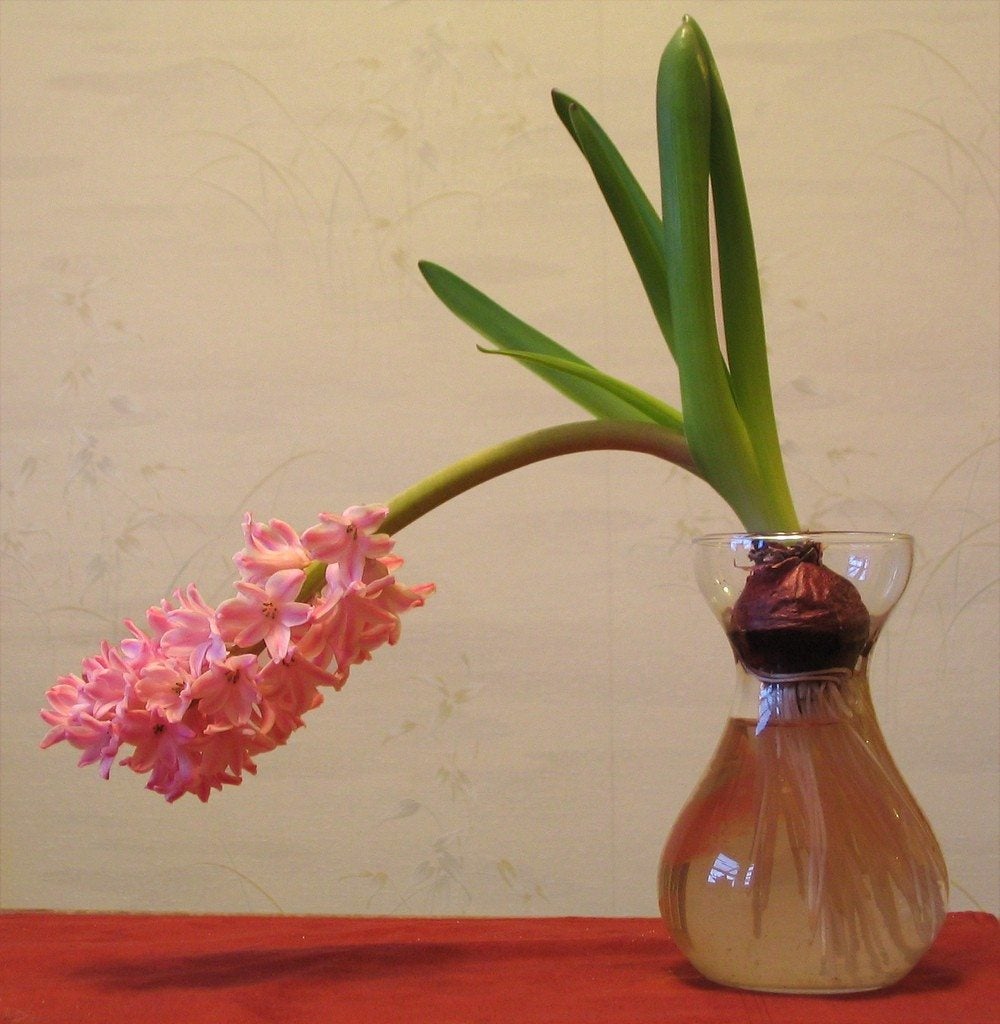Hyacinth Plant Flopping: Tips For Supporting Your Top Heavy Hyacinth Flowers


Are your hyacinths falling over? Don't worry, there is a silver lining. This is a common issue that many people encounter when growing these plants. Continue reading to learn more about supporting top heavy hyacinth flowers and how to fix a dropping hyacinth plant for good.
Reasons for Hyacinth Plant Flopping
There are several reasons that can be attributed to hyacinth plant flopping. Let's go over the most common causes for hyacinths falling over in the garden:
Top Heaviness and Variety - One of the most common complaints when growing hyacinth flowers is floppy stems. Top heavy hyacinth flowers cause the stem to flop over while in full bloom. Some of the taller varieties of hyacinth flowers are naturally prone to flopping.
Light and Temperature - Another reason for hyacinth drooping is either not enough light or excessive heat. Indoor hyacinth plants should be kept in bright, indirect light, while those planted outdoors require a sunnier location. In addition, hyacinths prefer to be kept a bit on the cool side, around 60 degrees F. (16 C.) indoors and no more than 70 to 75 degrees F. (21-24 C.) outside.
Soil and Plant Depth - Not always a major problem for most people, but sometimes it's the health of your soil that may be causing your hyacinths to fall over. No, not poor soil as you might think, but actually rich soil can occasionally be blamed for floppy hyacinths.
Too many nutrients can cause rapid growth, which then leads to thinner, weaker stems. Planting depth can also affect the floppiness of stems. If bulbs are not planted deep enough, it can sometimes result in weak stems that are more prone to bending over and breaking.
How to Fix a Drooping Hyacinth Plant
Learning how to fix a drooping hyacinth plant obviously depends on its cause. While there's nothing you can do about top-heaviness, as this is simply a natural growing characteristic with these plants, you can still alleviate the issue of hyacinths falling over through plant staking or closer planting (which help the blooms to support one another). This can be done either in pots or in garden beds.
Sign up for the Gardening Know How newsletter today and receive a free copy of our e-book "How to Grow Delicious Tomatoes".
Since various cultivars differ in their heights and floppiness, choosing a shorter variety can help reduce bending of stems. Planting precautions can also help with hyacinth plant flopping. Avoid planting bulbs in overly warm weather. Of course, in the garden there's little you can do for unusually warm spring temperatures but indoors they should be kept between 60 and 70 degrees F. (16-21 C.)
Also, be sure to provide sufficient lighting. If they are growing in shade or a darker room, you should move them to a sunnier or brighter location. In order to prevent falling hyacinths due to overly rich soils, go easy on the organic matter or fertilizer when planting.
Also, while roots need to be deep enough to reach water, the stem needs reinforcement at the base to support the abundant florets of each hyacinth flower, meaning deeper planting helps produce stronger stems. Therefore, plant your hyacinth bulbs at a depth of 6 to 8 inches (15-20 cm.).
Hyacinth Bulb Support
Depending on the variety, hyacinth plants grow up to 18 inches (46 cm.) tall and their large, globe-like blooms may be become quite heavy. It is because of this; tall top-heavy hyacinth flowers must be supported.
So how does one go about providing hyacinth bulb support? That's easy. Use thin bamboo stakes or small skewers for staking hyacinth flowers. Cut the stakes to the approximate height of the plant, plus 4 inches (10 cm).
Once the stalks break through and flowers begin sprouting in spring, carefully insert the stake about 4 inches (10 cm.) into the potting soil or ground, about an inch (2.5 cm.) from the stem, slowly easing the top of the stake under the flower head and along the length of the stem.
Loosely tie the stake to the plant with coated plant ties, twine, or strips of panty hose. Be sure to remove the stakes after the flowering season and store them for later use.

Nikki Tilley has been gardening for nearly three decades. The former Senior Editor and Archivist of Gardening Know How, Nikki has also authored six gardening books.